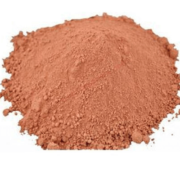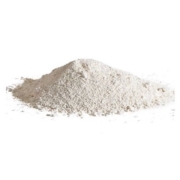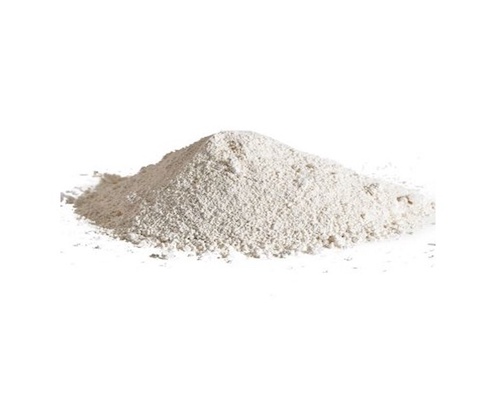Everything You Should Know about Cerium Oxide Polish
Cerium oxide is a chemical compound formed by the calcination of components such as cerium oxalate and cerium hydroxide. The most common use of cerium oxide is in the automotive industry, where it is used as an abrasive for polishing glass and crystals because its physical and chemical reaction makes it perfect for the polishing effect.
It also has other uses, such as in the cosmetics industry, where it is used in products that serve as a sunscreen due to its capacity to absorb ultraviolet rays, making it an alternative to zinc oxide.
Cerium Oxide in Detail
Cerium Oxide (CeO2) is a powdered chemical compound, slightly hygroscopic, used as a fine abrasive agent for scratch repair, polishing and grinding of mirrors, architectural glass furniture, flat screens, decorative parts, jewelry, optics, LCD screens, hard disks, windshields, among other applications.
Cerium oxide or CeO2 is a chemical compound formed by the carbonization of cerium oxalate (CeO2CCO2Ce) or cerium hydroxide [Ce(OH)4]. It can take on a transparent color in perceptible light due to its absorption of ultraviolet radiation.
Cerium oxide is used as a fine abrasive for the final polishing of glass, crystal, precious and semiprecious stones, lenses, vehicle optics and optics in general, watch crystals, vehicle windows, mirrors and many other different applications. The cerium oxide is a high optical grade polishing compound used to remove and polish scratches from beveled mirrors, table tops, TV faceplates, vehicle glass or structures.
How do you polish with cerium oxide?
The main use of cerium oxide is in the automotive industry. There are products designed to polish windshields and remove scratches that accumulate on windows, mirrors and even headlights.
Depending on the use, the use of a felt polishing disc is required for the process to be carried out more efficiently.
Before the application of Cerium, the deepest scratches should be removed from the surface with sandpaper, polishing pastes or the corresponding products depending on the material and remove any dirt that may contaminate the surface to be polished.
It is presented in fine powder and for the polishing operation we must mix it with distilled water, its application and depending on the surface, we will make it with machine and felt discs or polishing sponges, being possible the application by hand with a micro-fiber cloth rubbing in circular direction and we will maintain the surface to be polished with the necessary humidity. When you apply it, it is recommended the use of protective glasses, gloves and respiratory protection mask.
Since its most frequent use is as an abrasive for polishing glass, it can be easily purchased in different brands and presentations. To polish glass surfaces and eliminate shallow scratches, it is necessary to thoroughly clean the surface to be worked on, making sure that it is free of dirt and dust particles. The next step is to mix the cerium with water in the proportions indicated by the manufacturer. It is necessary to use polishing wheels with special felts to take better advantage of the physical and chemical properties of the product.
The wheel is kept in motion until the surface is brought to the desired finish. This makes it possible to eliminate scratches on rear-view mirrors, windshields and windows, and even acrylic headlights, as long as you work with precision.
It is also efficient for removing scratches on the acrylic dashboard inside the car.
As a warning for use, this product should not be inhaled, as it can be a threat to the liver and lungs if it accumulates in large concentrations.
Other applications of the Cerium Oxide.
Besides its use in the automotive industry, the cerium oxide has another applications in different industries.
Jewelry polishing abrasive
Due to its physical qualities, cerium oxide is an element frequently used for fine polishing, being special for polishing precious and semi-precious stones, allowing a delicate finish ideal for the jewelry industry. It is also used for repairing scratches on jewelry pieces and scratches on precious stones.
Watch dial repair
Mineral crystal watches are often scratched, unlike sapphire watches. When scratches are shallow, they can be restored with the use of cerium particles and water.
Glass industry
Being a fine abrasive, it is widely used for polishing the surfaces of precision lenses. It is widely used both in optics for all types of precision glassware and in the development of objective lenses. Another common use in the glass industry is as a filter coating on lenses, as the compound has the property of reflecting ultraviolet light, eliminating the harmful effects of radiation on eyesight.
Ceramics production
Cerium oxide is also used as an indispensable element in the production of high-quality ceramics. Dental ceramics and semiconductor ceramics are the most common uses in this industry, although it is also used in the production of high-precision components such as fuel cells and ceramic components for the aerospace industry. The reason for its use is that it improves stability and provides greater resistance to wear and high temperatures in ceramics when this chemical element is included in its composition.



